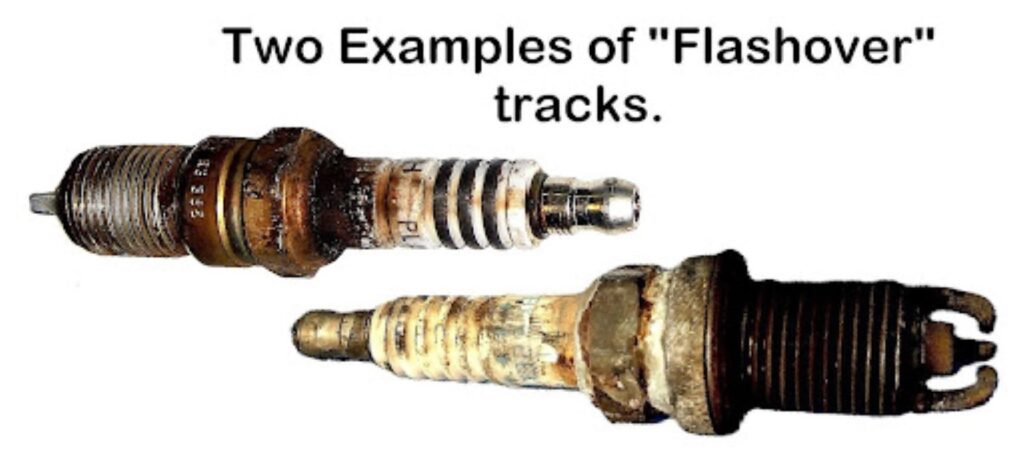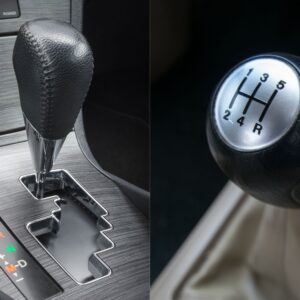Do you own an automatic vehicle with a gasoline direct injection engine (such as the Hyundai Smartstream, Ford EcoBoost, or Chrysler Pentastar V-6)? Some owners have reported that their vehicle jerks sharply when they shift from park to drive and step on the gas pedal. Their car acts like it’s running on fumes, even though the gas tank is full. The issue happens more often when you run the A/C.
What are the possible causes of this issue in vehicles with GDI engines and automatic transmissions? Can you fix the problem that causes your car to jerk when speeding up from low speeds?
Why Your Car Jerks When Accelerating at Low Speeds Despite Its Automatic Transmission
First, make sure the Automatic Transmission isn’t causing the problem. In some cases, a simple transmission diagnosis with the scan tool may point to the transmission skipping a gear on the way up and causing a bad jerking sensation.
If you can feather the gas and make it not so bad, the transmission adaptive tables may need to be reset, and that can be done with a good scan tool. Lower-end scan tools won’t have this function.
If the issue isn’t in the transmission or its learned tables, here may be some reasons why your car jerks when you accelerate from relatively slow speeds:
Carbon Deposits on Intake Valves
The most likely reason for this problem is carbon deposits on the intake valves that admit air into the engine.
This is fairly common in GDI engines that do a lot of in-town driving. GDI engines do better when driven somewhat aggressively in regard to intake valve deposits.
The fuel injector sprays on the upper side of the intake valves on older systems and tend to keep the intake valves clean. But on GDI engines, the fuel bypasses the intake valves entirely and is injected directly into the combustion chamber.
Thus, the same gummy deposits that collect on the walls of the intake and around the throttle plate because of PCV oil steam will collect on the valves, condense into sludge, and restrict airflow. Some newer GDI engines also have MPI injectors for that very reason, Fords and Toyotas particularly.
Carbon deposits pose a bigger problem for modern engines with advanced technologies like emissions control and direct injection systems., Gasoline direct injection engines are prone to having their air intakes coated and clogged by unburned fuel.
Gasoline direct injection engines use a high-pressure fuel injection system that sprays gasoline directly into its combustion chamber. This enables the ECM to decide when and how to spray the fuel rather than waiting for the intake valve to open and carry the atomized fuel into the combustion chamber.
Furthermore, the fuel vapor droplets are much smaller in GDI systems because of the high pressure, so that the fuel burns more completely and efficiently, increasing the engine power and reducing emission levels. Smaller engines with GDI and turbocharging can equal the power output of much larger conventionally fuel injected engines.
Excessive carbon deposits can reduce the engine’s efficiency, resulting in issues like reduced power. They can damage the engine and cause components to fail.
When you run the gasoline direct injection engine at high RPMs, carbon deposits on the intake valves can break away. Your vehicle might jerk violently in response to the changes.
Incorrect Spark Plugs
Did you recently replace the spark plugs in your vehicle’s ignition system? Check the new ignition parts to see if they’re the right ones. Installing the wrong parts will cause problems. Putting incorrect spark plugs can cause issues like jerking at low speeds when trying to speed up.
Cracked and Shorted Spark Plugs
You might have confirmed that the spark plugs are correct, but don’t lower your guard just yet. Check each plug for fractures and flashover tracks where the spark has arced inside the boot rather than traveling through the center of the plug and sparking at the plug gap.

Check each spark plug for fractures and flashover tracks where the spark has arced inside the boot rather than traveling through the center of the plug and sparking at the plug gap.
– Richard McCuistian, ASE Certified Master Automobile Technician
Dual-Clutch Transmission Issues
Some vehicles use a dual-clutch transmission. If your car or SUV has this transmission type and jerks while accelerating at low speed, there might be a problem with the complicated system.
A dual-clutch transmission contains two separate transmissions that operate in concert. Usually, one transmission contains the even-numbered gears while the other one has the odd-numbered gears. Each transmission also has a clutch.
Since dual-clutch transmissions are complex and have many moving parts, they’re more likely to develop issues, including jerking at low speeds.
While driving your car, try to get a feel for the jerks that happen at low speed. Do the jerks feel like shuddering? And do they fade away when your vehicle picks up speed? If you answered yes to those questions, there’s a problem with the dual-clutch transmission.
Tips For Fixing This Problem
No one wants their vehicle to jerk or shudder without warning. It’s unpleasant at best and potentially dangerous at worst. Fortunately, you can usually take steps to eliminate this problem
Here are some tips to prevent your car from jerking when accelerating at low speeds:
Clean the Dirty Intake Valves
Since the gasoline direct injection engine can’t wash its intake valves, you must clean the dirty part yourself. Get a gasoline direct injection cleaner (also called an intake valve cleaner) and follow the instructions on how to use it.
Replace the Bad Spark Plugs
Whether you put the wrong spark plug or have a cracked or flashover tracked one, you must replace the faulty part. If you do have flashover tracks, always replace the boot or the track will recur. There’s a matching track inside the plug boot that will cause the same problem to repeat even though the plug is new. Sometimes flashover tracks look like cracks.
Ensure the replacement spark plug is compatible with your vehicle and doesn’t have any fractures or damage.
When your car jerks when accelerating at low speeds, your automatic response should be to find out what’s wrong. You can take steps to fix the problem and enjoy safe driving once more.
Any information provided on this Website is for informational purposes only and is not intended to replace consultation with a professional mechanic. The accuracy and timeliness of the information may change from the time of publication.






































